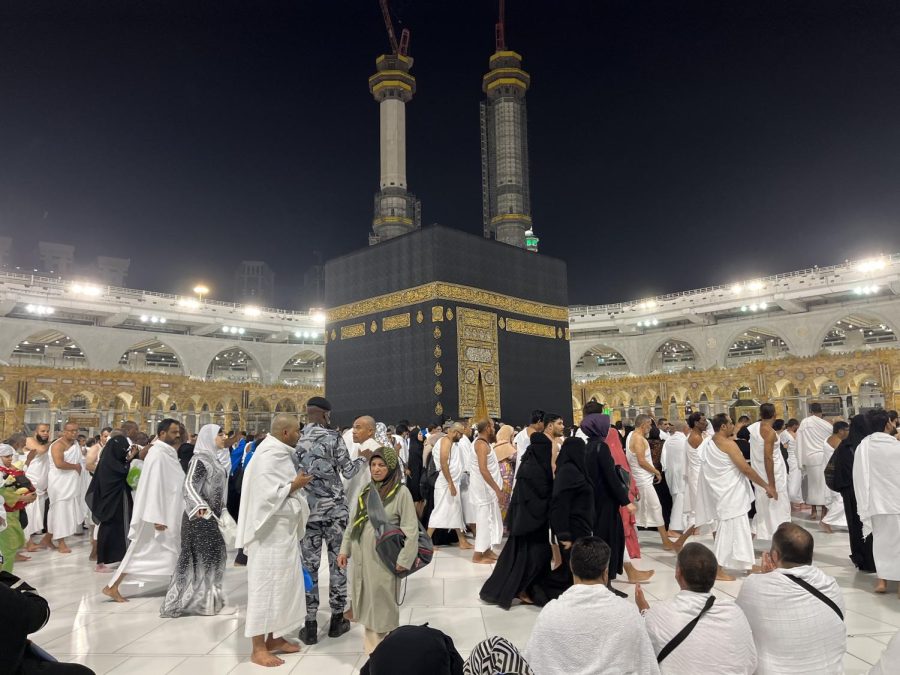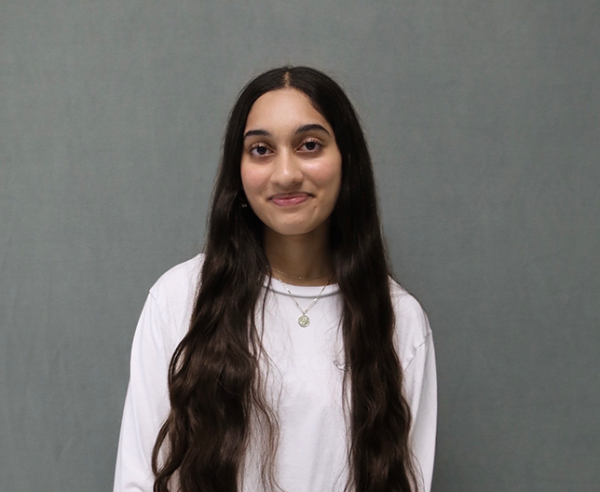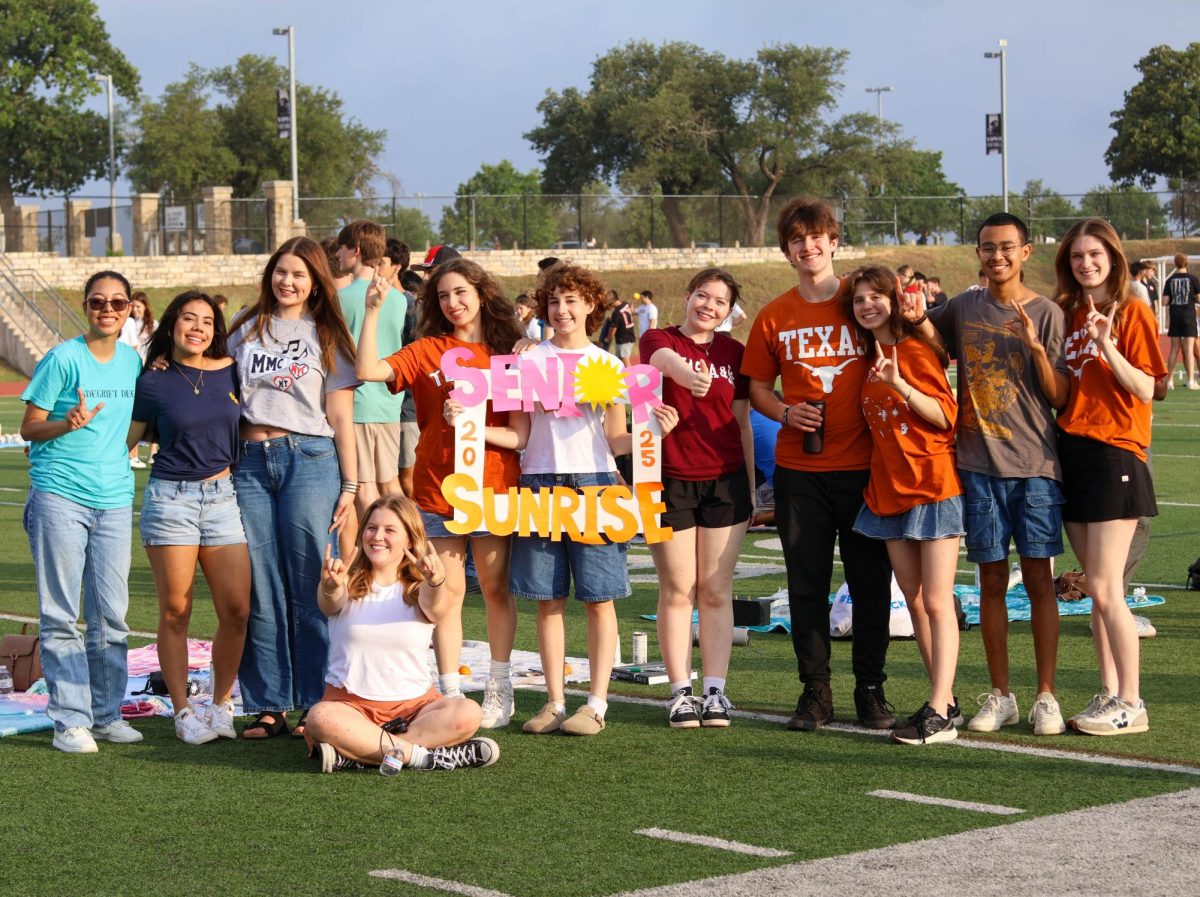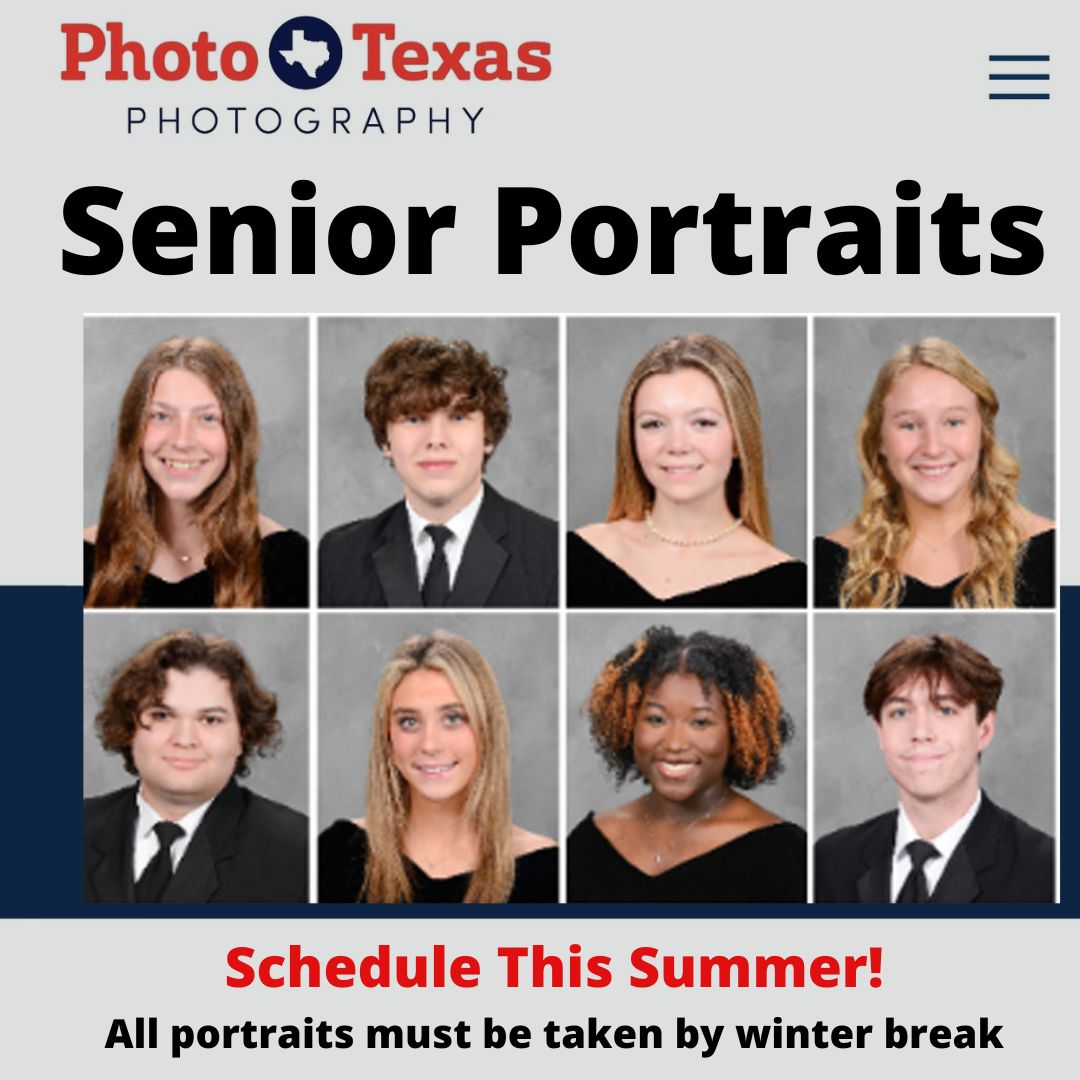A trip to the holy cities: Traveling to Makkah, Medina for Umrah
December 14, 2022
I looked around as I sat in front of the Kaaba praying, speechless. The jingle of the tasbeehs (prayer beads) on people’s fingers, the thousands of hands raised in dua (prayer) and the smiles and looks of astonishment on their faces. Tears trickled down their lit up eyes, some of happiness, some of guilt, but none of sadness. People of every race, ethnic group, age, gender, all brought together by our love for Allah.
This Thanksgiving, my family and I decided to show our gratitude in a different manner than most Americans. Accompanied by friends, we went on an Islamic pilgrimage to Makkah. Though Hajj is the more well known and common pilgrimage to take, we did Umrah. Umrah is a shorter, less exhausting and non-compulsory version of Hajj. It can be completed at any time of the year, unlike Hajj, which is only a certain five days in the Islamic calendar each year. Though I had technically been to Umrah with my family when I was three, this was my first time fully processing it.
Over the summer, Sheikh Attia Omara, the imam of our local mosque, told my dad that he was leading a group on Umrah this Thanksgiving break through Manasik Tours, an international company. My family was immediately interested. We had been looking forward to the trip and planning out logistics for months. And soon enough, the day had come. On Nov. 19 we met with our group and took a bus ride to Houston. From there, we took a 12 hour flight to Istanbul, Turkey, and after a six hour stopover in the airport, we finally boarded our last flight. Arriving in Medina, Saudi Arabia, forming friendships with the rest of our group took no time.
As soon as we landed in Medina, we drove to our hotel, which was right across from Masjid al-Nabawi (the Prophet’s Mosque). At 5 a.m. we rushed to the mosque to pray Fajr, the prayer before sunrise. As we neared Masjid al-Nabawi, I saw people spilling out of the mosque’s doors, praying on the pavement outside. I had never seen such a full mosque, especially so early in the morning. After it emptied out a bit, my mom, her friend Kay Aunty and I, entered the mosque and our jaws dropped at the sight of its beauty. Its colorful domes, marble floors, glass stained windows and iconic green carpets were more ravishing than I had previously imagined.
Medina’s beauty was omnipresent. There were street vendors with food from every country. Gold shops, malls, fast food places and bazaars were everywhere you ventured. My personal favorite were the two riyal bazaars where you could secure the best deals buying souvenirs, rings and tasbeehs. In addition to the jewelry and trinkets, my mom, Kay aunty and I put our hearts into finding the perfect abayas; traditional dresses worn throughout Muslim countries. Hunting for abayas, we searched every bazaar we could find, bargaining with the salesmen – one of my favorite activities while traveling in Asia, and coming back to the stores every day to second-guess our choices. Abaya shopping truly is an art.
While the streets of Medina and Masjid al-Nabawi had much to offer, it was time for the real thing- Makkah, one of the holiest and busiest cities in the world. While it was daunting hearing the stories of stampedes caused by unruly crowds, my excitement pushed my concerns aside. Our group got on a six-hour long bus ride to the city. I heard the views were amazing; I wouldn’t know though, I slept through the whole thing because my jet lag gave me a psychotic sleep schedule.
We arrived in Makkah and it was indeed one of the most beautiful cities I had ever been in. Our hotel was a minute away from the Kaaba, some could see the site from their room window. Our group congregated in the hotel lobby and walked to Masjid al-Haram, the mosque surrounding the Kaaba. It was finally time. We were about to perform Umrah, which consists of several rituals including Tawaf, where you walk around the Kaaba seven times, Sa’iy, walking between the hills of Safa and Marwah seven times and lastly Taqsir, cutting a portion of your hair to complete your Umrah, all while simultaneously making duas.
Leader of our group, Sheikh Attia, sensed worry from many of us. Fears of failure, forgotten prayers, and a potentially botched Umrah clouded our minds. To help, he gave us a pep talk that really stuck with me.
“You have been invited here by Allah,” Sheikh Attia’s words echoed in my head and helped me comprehend the importance of this moment.
We walked towards the Kaaba and soon we were less than 30 feet away from it, wonderstruck. The Kaaba was magnificent beyond words. Its deep black, silky walls, rich golden borders and the clock tower above it, illuminating a striking green light. It was an image of perfection. Smaller than I had expected, its comfy borders made me feel safe. All of our life we have looked up to this grand structure. Every single Muslim in the world faces it five times a day to pray and I was standing right in front of it.
My family and I slipped into the crowd and worked our way up close to the Kaaba. I put both my hands on the walls, made a dua and kissed it, a renowned tradition to show love for Allah. The next morning, my mom and I climbed up to the roof of the Haram at four a.m. and stayed there until sunrise. As we took in the peaceful atmosphere, the melodic recitation of Arabic Quran verses all around me soothed my ears as I prayed Tahajjud (morning prayers). I prolonged my sujood (prostration) during prayer, mentioning everyone and everything I care about.
Looking at the diversity of people during Umrah was beautiful to me. There were hundreds of languages all around me, many that I had never even heard before. People had traveled from every single part of the world to experience this. The genuinity and wholesomeness in Saudi Arabia was incomparable. I loved seeing the affectionate look on the faces of families and seeing old men holding hands to make sure no one got lost.
“This is a great experience for you, Aisha,” Sheikh Attia said. “Because it shows you that you are a part of something larger, a community that’s bigger than just ICLT (our local mosque).”
And, he was right. As a minority in America, going to Saudi Arabia made me feel at home. It was an entire city full of Muslims where we didn’t have to hide or make excuses for our religion. We could be unapologetically ourselves.
When I tell people in America, specific to this school, that I went on a religious trip, their attitude changes. They tend to become closed off and think of me as extremely religious, but why is this considered a bad thing? What people fail to understand about Islam is that it’s centered around love. While you may consider it extreme that we “have” to pray five times a day, us Muslims prefer the mindset that we “get” to pray five times a day. In fact, it’s the highlight of our day because it’s the time we are closest to Allah. Islam brings us peace and creates unimaginable lifetime bonds between us and that is something I wouldn’t trade for the world.
My Umrah trip was an amazing experience, but not because of the luxurious hotels, malls, or delicious food, because it reassured me that Islam is my home and Allah brings me true happiness, unlike anything else.








Yness Martinez • Jan 5, 2023 at 11:28 am
Aisha this is so incredibly beautiful, WELL DONE!
Dana Zohny • Dec 29, 2022 at 11:46 pm
Mashallah! This was really beautiful Aisha. Great job <3
Mike T • Dec 17, 2022 at 10:42 pm
Great insight to Umrah. Thank you for sharing.
Ethan Sarwar • Dec 17, 2022 at 9:55 pm
Mashallah! This is amazing Aisha.
Rashid Qureshi • Dec 17, 2022 at 9:35 pm
Mashalah, I am very proud young people in our community. Very beautiful written. Excellent job. Keep writing such good articles. Alhamdolilah.
Sarah K • Dec 17, 2022 at 8:08 pm
“She’s really good!”
Good job Aisha!!!
Olla A-Shalchi • Dec 17, 2022 at 8:04 pm
Beautifuly written. Thank you for sharing your experience. I hope that more youth become interested in taking this spiritual journey that cannot be replicated any where else.
Ahmed Omran • Dec 17, 2022 at 6:52 pm
Great article
RAIS AKBAR • Dec 16, 2022 at 3:53 pm
Excellent work Aisha. Well done.
Atique Zafar • Dec 16, 2022 at 11:06 am
This indeed sounds like an amazing spiritual experience. Thank you for sharing.